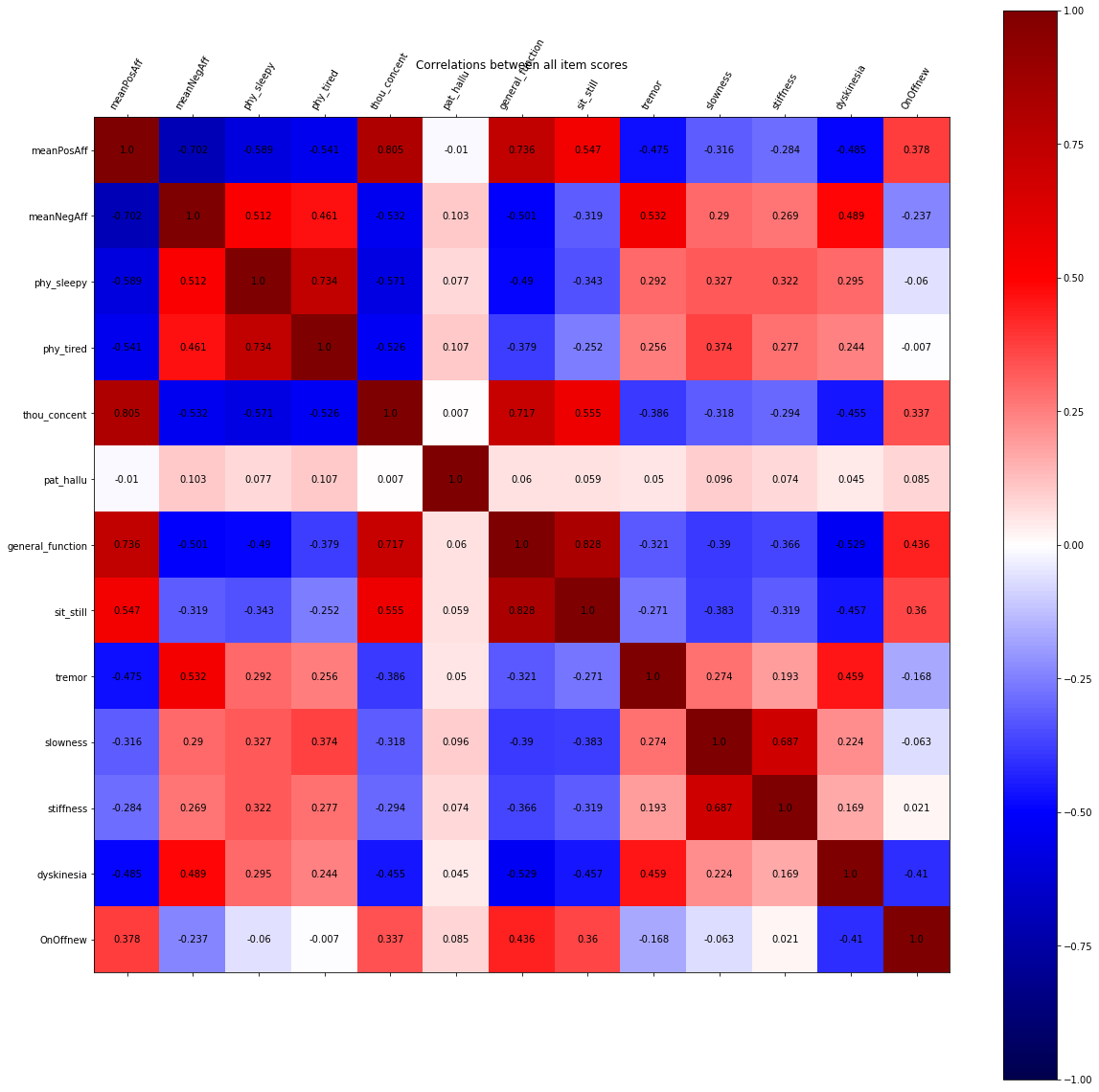Session Information
Date: Wednesday, September 25, 2019
Session Title: Phenomenology and Clinical Assessment of Movement Disorders
Session Time: 1:15pm-2:45pm
Location: Les Muses Terrace, Level 3
Objective: To validate the ‘ecological momentary assessment’ (EMA) method, also known as the ‘experience sampling method’ (ESM), as an instrument to monitor symptoms of PD.
Background: Intra-day and inter-day fluctuations in e.g. bradykinesia, tremor and postural instability as well as many non-motor symptoms often increase with the disease duration of PD.(1)Monitoring these fluctuations in daily life is important for therapy evaluation, especially when levodopa-induced dyskinesia or on/off fluctuations are suspected. Wearable sensors are increasingly used to overcome the temporal limitations of classical rating scales such as the MDS-UPDRS and quality of life scales.(2)However, the interpretation and validation of sensor-based monitor methods in home situations is challenging since there is no parallel continuous ‘ground truth’ to compare with.(3) We introduce the use of EMA to compliment sensor data with the patient’s experience of symptomatology at multiple moments daily.
Method: Our EMA method, a smartphone-app, asks 25 items covering motor symptoms, subjective burden of symptoms, psychological symptoms, side effects and contextual information, 7 times daily at semi-random moments. Patients can answer to most items by agreeing on a statement on a 7-point Likert-scale. To avoid recall bias and procrastination, the questionnaire has to be opened within 15 minutes. We validated our EMA method in a pilot study in which 20 PD patients used EMA combined with wearable sensors for 14 consecutive days. We assessed correlations between items that are theoretically expected to correlate (construct validity).
Results: Items as bradykinesia, tremor, symptom burden, ability to stand, walk or speak, positive and negative affect had high correlations in the expected directions (Spearman R = 0.4 – 0.8; all p<0.05) (fig. 1). Analyzing person-mean centered scores and time-lagged responses, these correlations were still present, however substantially lower (Spearman R = 0.1 – 0.4; all p<0.05).
Conclusion: EMA is able to collect valuable information on patients’ subjective symptom burden and wellbeing in the daily life environment and may complement objective sensor data. This may contribute to overcome current challenges in the development of valid Parkinson monitoring methods for the daily life environment.
References: 1. Jankovic J. Motor fluctuations and dyskinesias in Parkinson’s disease: clinical manifestations. Movement disorders : official journal of the Movement Disorder Society. 2005;20 Suppl 11:S11-6. 2. Thorp JE, Adamczyk PG, Ploeg HL, Pickett KA. Monitoring Motor Symptoms During Activities of Daily Living in Individuals With Parkinson’s Disease. Front Neurol. 2018;9:1036. 3. Rodriguez-Molinero A, Perez-Lopez C, Sama A, de Mingo E, Rodriguez-Martin D, Hernandez-Vara J, et al. A Kinematic Sensor and Algorithm to Detect Motor Fluctuations in Parkinson Disease: Validation Study Under Real Conditions of Use. JMIR rehabilitation and assistive technologies. 2018;5(1):e8.
To cite this abstract in AMA style:
J. Habets, M. Heijmans, C. Herff, C. Simons, A. Leentjens, Y. Temel, M. Kuijf, P. Kubben. Validation of the ‘ecological momentary assessment’ (EMA) method as a tool for daily life monitoring in patients with Parkinson’s disease [abstract]. Mov Disord. 2019; 34 (suppl 2). https://www.mdsabstracts.org/abstract/validation-of-the-ecological-momentary-assessment-ema-method-as-a-tool-for-daily-life-monitoring-in-patients-with-parkinsons-disease/. Accessed January 2, 2026.« Back to 2019 International Congress
MDS Abstracts - https://www.mdsabstracts.org/abstract/validation-of-the-ecological-momentary-assessment-ema-method-as-a-tool-for-daily-life-monitoring-in-patients-with-parkinsons-disease/

